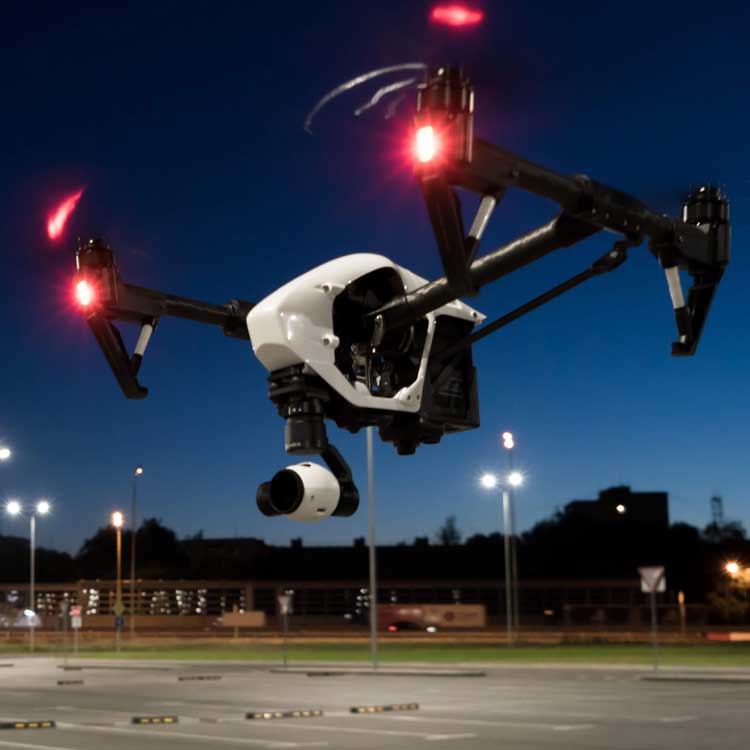There’s a popular saying in business: You can’t manage what you don’t measure. As it turns out, the same is true of science – and climate science, in particular.
But measuring climate isn’t always easy. Take air quality, for instance. Monitoring air quality across a region or pollution from a single power plant typically has required a mix of ground-based sensors and human data collectors. Unfortunately, the manual collection of environmental data by sensors and people is not only extremely valuable but also extremely time-consuming and inefficient. And in the case of companies that self-report, sometimes extremely unreliable.
Thankfully, the convergence of cloud computing with machine learning and satellite imagery means there’s now a better way to glean global insights about everything from extreme weather and sea-level rise to water and air pollution. Called “geospatial intelligence,” it’s revolutionizing the collection and analysis of information by harnessing data from satellites and using machine learning algorithms to detect changes in tree canopies or monitor wildfire risks.
It’s the kind of work that startups like Blue Sky Analytics are doing to track polluters in real time. Blue Sky’s technology translates environmental data from public and private sources into easy-to-digest information for potential clients in sectors like agriculture, health care, insurance and government.
The company’s founders, a sister-and-brother team from India, hope to become the “Bloomberg of environmental data” by building a system that measures the information just like Bloomberg measures financial markets. Their motto is an updated take on that classic business refrain: “You can’t solve what you can’t measure.”
“Earlier, this data was questionable,” said Kshitij Purwar, Blue Sky’s co-founder and CTO. “Right now, it’s not questionable. It’s objective and credible, and there is a whole body of science behind it.”
From the Clouds to the Cloud
While it now lives in the virtual cloud, geospatial intelligence started in the actual clouds, according to Joseph Sexton, co-founder and chief scientist at geospatial intelligence firm terraPulse. During the Civil War, he says, troops relied on information obtained from hot air balloons for reconnaissance.
Today, it’s not balloons that fuel geospatial intelligence, but rather public and private satellites that relay images of Earth from space. The number of those images is growing exponentially because the number of satellites is exploding. The population of public and private satellites grew from 958 in 2010 to 3,371 in 2020, according to the “2021 State of the Satellite Industry Report” by Bryce Space and Technology.
“The volume and diversity of the information coming down to the surface of Earth from space-born satellites is blanketing the Earth in information,” said Sexton, whose company uses satellite imagery to extract information about the land-use economy for clients such as the World Bank and the U.S. Forest Service.
“Companies like terraPulse and Blue Sky are mining that data and connecting it to users.”
More Than Meets the Eye
When most people think of satellite images, Google Maps comes to mind – bird’s-eye views of cities, towns and neighborhoods. But with technology, geospatial analysts can extract a lot more from satellite images than what meets the eye.
As NASA explains, satellite images differ from run-of-the-mill photographs in that they contain measurements of both visible and invisible light. These images are visualizations of data, showing light absorption, energy radiation and surface temperatures, which with the help of technology can be used to chart trends and patterns over time, according to the National Oceanic and Atmospheric Administration (NOAA).
With those data layers, Blue Sky can pinpoint the temperature gradient of a leak from an apartment building into a lake and track how hot water from that leak is impacting the lake’s water quality.
“What we see is the imagery, but there is a whole electromagnetic spectrum that these satellites capture,” Purwar says. “This is beyond the human spectrum of vision.”
To pull insights from satellite images, Blue Sky trains machine learning algorithms to recognize patterns. Cloud computing makes it all possible, allowing firms like Blue Sky to handle massive amounts of data while ensuring that team members can access the same information at any given time and from any given place. Serverless cloud computing, in particular, has been a boon for the company, freeing it from investing time and money in expensive infrastructure.
“If you were to do this 10 years ago, you would not be able to do this because you don’t have access to cloud computing resources,” Purwar said.
Focus on Climate Change
Blue Sky began in February 2018, when Purwar’s sister was looking for a better user interface to disseminate air-quality data to people in India. The siblings discovered huge gaps in available information because India had few localized ground monitors to track air quality. Therefore, they could measure only small areas within the sprawling country.
“The problem wasn’t just visualization, but available data,” said Purwar, who realized that he could create a bigger and better picture of air quality in India by merging data from both ground monitors and satellite imagery.
Blue Sky now is focused on building an AI-powered infrastructure to uncover a variety of climate-related insights. An insurance company, for example, might use Blue Sky’s data to calculate health insurance premiums based on air quality and associated health risks. A real investor, meanwhile, might use it to inform the purchase of an apartment building; if the building is polluting nearby waterways, remediation could be a significant burden. Even governments can use the data, which might reveal potential hotspots for future wildfires.
Because creating it is so complex, much of Blue Sky’s data will be reserved for paying customers, according to Purwar. But Blue Sky plans to provide at least some information to the public, such as recent air quality information about a specific location.
Experts say the market for geospatial intelligence will continue growing. Because in an information-based economy, people expect data at their fingertips.
Saurabh Channan, CEO and co-founder of terraPulse, sees this proliferating.
“Geospatial data is going to weave quietly into house-buying decision making, underwriting decision making, countries making better decisions,” Channan said. “The list just goes on and on and on.”
Sarah Lindenfeld Hall is a longtime journalist and freelance writer who writes regularly about the future of work and technology. You can find her on Twitter and LinkedIn.
© 2021 Nutanix, Inc. All rights reserved. For additional legal information, please go here.






